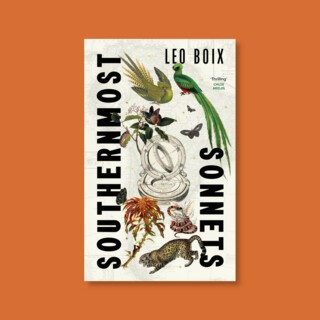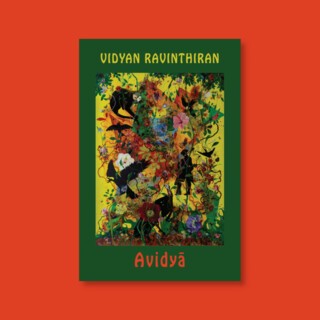Notes on the Weird: an extract from M. John Harrison’s ‘Wish I Was Here’
Posted by M. John Harrison

M. John Harrison’s first work of memoir – or ‘anti-memoir’ – Wish I Was Here launches this Thursday at the Bookshop. The event is sold out, but if you’d like to get your hands on a signed copy, pre-order here. Read on for an extract from this daring new work from one of Britian’s most original writers.
The Weird is a way of writing about the real. It evolved slowly across the twentieth century and then faster than the eye could follow across the first two decades of the twenty-first, arising from constant collisions, engagements and exchanges of fluids between the horror story, the ghost story, landscape writing, the hauntological and psychogeograpical perspectives. All fictions are cultural, but at the moment the Weird is intensely cultural & self-aware. Do I dare write about it? Or would anything I could say only fix it in some awkward posture? Attribute to it motives it never had? People don’t like this or that shot of themselves, caught in a coat that makes them look old or reaching for something on a high shelf. I don’t want the Weird complaining, with some reason, ‘That’s not what I meant, that’s not what I meant at all.’
The Weird is not ‘Lovecraftian’: it does not belong to H. P. Lovecraft. Neither is it a subset of the Gothic. It is not the same as Freud’s uncanny. It does not belong to the set of ‘genre-adjacent sui generis’, and it is not, as some affirm, a wholly political position. In each and every case it should be a true idiolect. The Weird is not a genre in itself, it is a process. It is also an emergent quality which somehow precedes every combination of events, forms, genres and skills it can be said to emerge from. You can either do it or you can’t. Good luck with planning to be weird, see you at the ceremony.
Pale warm sun throwing very definite shadows of gravestones. The dead leaves scattered on the grass. The bulk of the church, and its shadow dividing the graveyard. A few flowers in cellophane decorating a new grave. The stones, whose inscriptions all seem to face away from the sun, look like darkened church windows. Mary Hannah Beardsall is buried here, daughter of Sarah Sandford; as is 267406 Private A Bailey who gave up his identity to the Northumberland Fusiliers, in which war is not clear; and Parker Hinchcliffe, draped in blackberry suckers, oak and holly at the shoulder of his greenish stone, which is carved to represent a scroll. Others lie completely hidden. Nevertheless the churchyard has a kind of calm which I associate with oak woods under some moorland crag, until two boys go in with sticks and run about banging them on the gravestones. Winter solstice. The woods now dark and slathered with mud. The sun rises as bitter as gall, the deer run diagonally across the hillside. The wind’s along the Edge. It’s in the trees. You can hear the hounds but they’re still down the valley. Insight can arrive in a language you don’t yet speak. Or can it? All this is Gothic, but it isn’t Weird.
A Weird text may not add up. It may not resolve. In fact it almost certainly won’t. Nevertheless there will be no signposts. The author is not on this tour to guide you. The author’s work has been to strip out affects, conclusions and motivations, then replace them out of order and at an odd angle. The way the picture is painted questions what’s being painted; the things that are painted question each other; the internal lighting questions everything: any episteme you can assemble to ‘understand’ the Weird should fail; or even better, almost succeed.
‘Weird’, a word so haunted, so transformational – so transitional – that the moment you type it, your soul is sucked through it and into communication with and exile from everything. ‘Everything’ being the truth about the world, in the sense that it is the world. ‘The truth about the world’ being that it’s everything in the world – and though you were always in the world, now you are in there with it, which is a different matter altogether. It is not a truth you wanted to know, this quality of the world being able to come alongside itself and yet remain a single thing. But you spoke the word. You turned the key. Of T. S. Eliot, Robert Bly says wickedly, ‘The phrase “objective correlative” is astoundingly passionless.’ As a teenager reading the Imagists, I always thought of the technique as an effort to suggest something which can’t be suggested otherwise. A way of making the surface hint at something unwritten. If not, what’s the point of it at all? In Eliot’s formulation, it risks becoming nothing more than a method of generating posh similes, a way of somehow trammelling the imagination, cleaning it up and putting it back to work on behalf of the literal.
If I had a ‘familiar spirit’ it would resemble less a nervous exotic animal than a chipped enamel sink. You would not find it on my shoulder but in its natural environment at the bottom of a derelict canal in the industrial Midlands. Our connection would be the source of my special powers, which would neither mimic nor metaphorise its qualities but be unmistakably sink-related. I would feel no emotion towards it even when events caused us to be separated and tortured. A sink can feel nothing. That is one of the baseline or default qualities of a sink. But wherever I went, I would know that out there, bedded in the mud beneath the slow black water, never more than a mile or two from my present location, its energies focussed, site-specific and calm, there my sink would be.
William Blake, Peckham and his tree of angels. The sheer willpower needed to envisage something! Even a memory has to be forced back into existence, and for all your effort, what do you get? An artefact of the process if you’re lucky, something not quite right in the corner of your eye. The exhausting effort to understand exactly what it is you’re trying to see. The exhausting effort to keep focus. The mad daily struggle against all the side issues that offer themselves. The struggle to keep the symbology intact/exact. I don’t care about anything else in writing now, as long as I get that part right. Everything else can follow along, ragtag and bobtail. Everything else is better that way anyway.
In the end, the Weird is just some hard work to make a surface which leads down to lots of interpretable levels in the text. No image or event is there by accident and they always point to a way of reading the whole story. It takes a long time to web that up – and also to avoid a lot of Hollywood formalist locks and keys which can be used to gain entrance to a rational solution. I don’t want to write puzzle stories that can be decoded to the correct answer. The zen of the Weird is to express it not as direct content but as a potential inside other content.
Wish I Was Here by M. John Harrison is published by Serpent’s Tail, priced £16.99.





